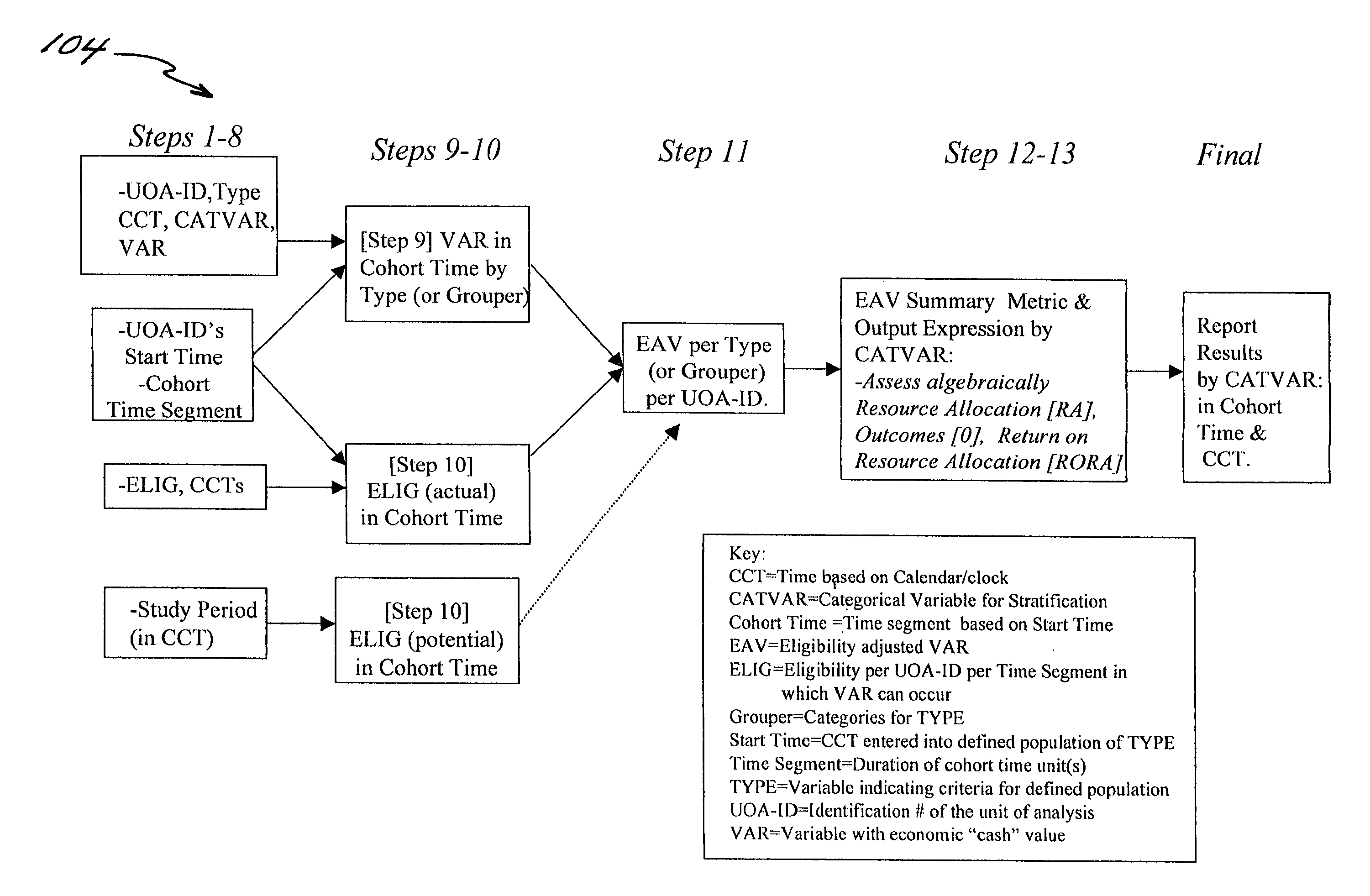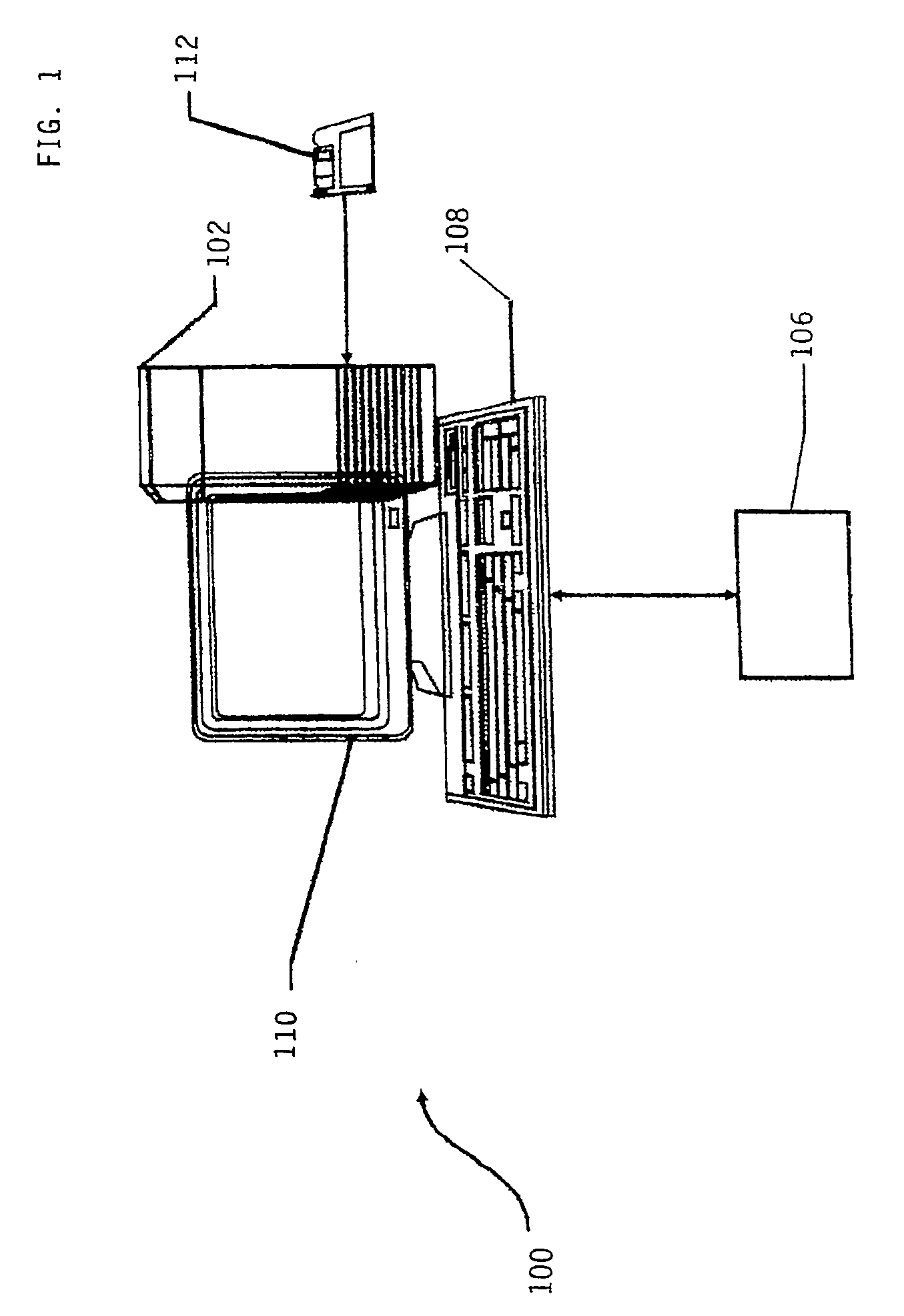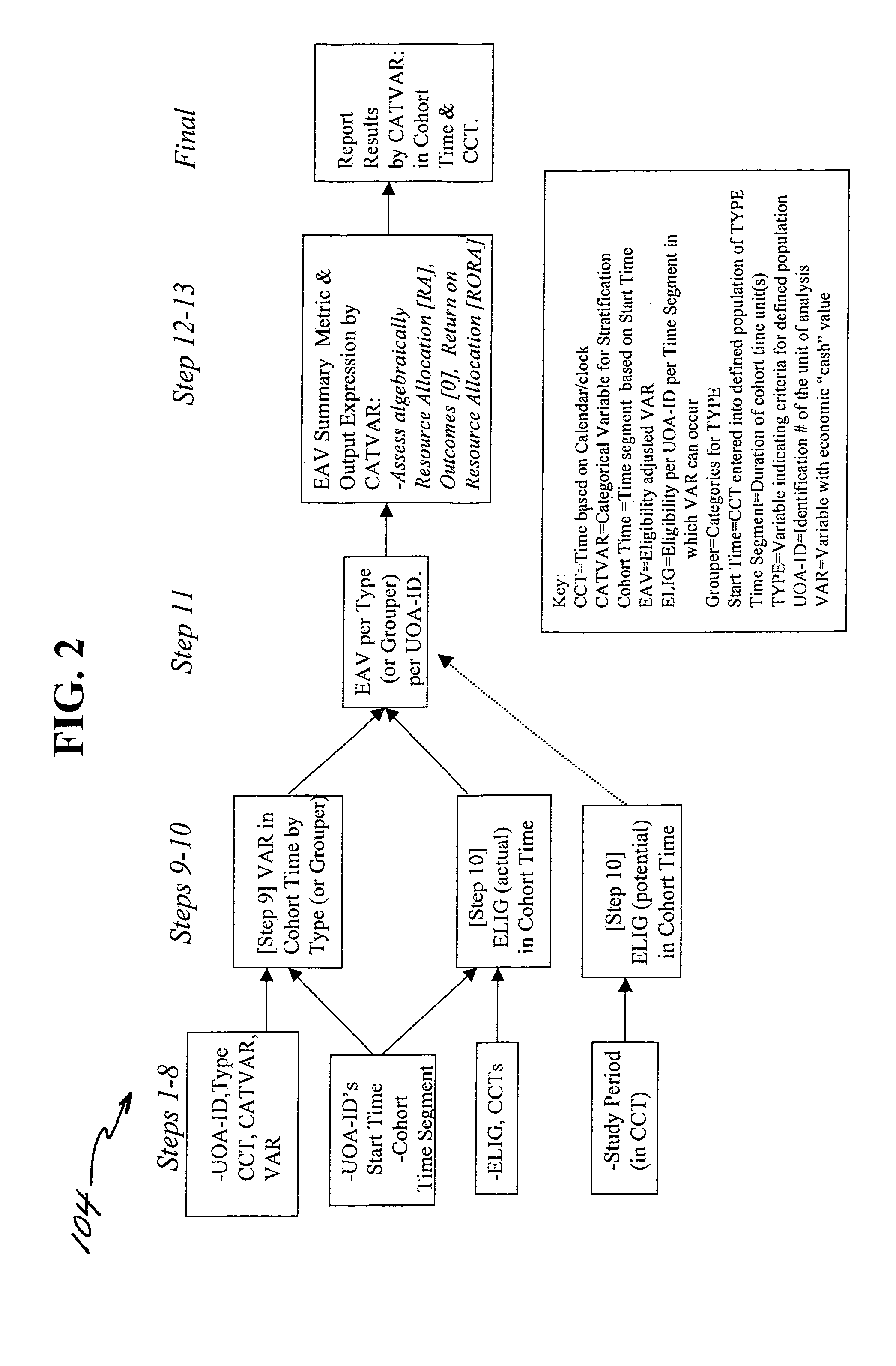Method and system for analyzing resource allocation based on cohort times
a resource allocation and cohort time technology, applied in the field of method and system for allocating resources, can solve the problems of business managers who are difficult or impossible to use this information to make proper decisions, businesses and other organizations typically either overspend their resources or do not avail themselves of statistical data and analysis
- Summary
- Abstract
- Description
- Claims
- Application Information
AI Technical Summary
Benefits of technology
Problems solved by technology
Method used
Image
Examples
example 1
Health Care
[0069]The present invention provides a method and a system for implementing the method of identifying effective resource allocation in the health care industry. As used in this example, effective resource allocation includes evaluating where to allocate current resources for the purpose of obtaining a desired outcome, such as reducing excessive costs due to overutilization or resources, as well as assessing the impact that such the resources had on the resulting outcome. Unfortunately, until now the current metric systems typically used in the health care industry operate to compute costs over large time periods (e.g. a calendar year) in defined populations and fail to account for changes in cost patterns in certain patient Populations within these large time segments.
[0070]The transaction of this example is initiated by the interaction between a health care provider and a patient where the Type (e.g. diagnosis or product) is “purchased” on a specific date and / or time (CC...
example 2
Marketing
[0075]In this example, the method and the system for performing the method of the present invention is utilized for use in the marketing industry. Often in the advertising industry the effectiveness of an advertisement is related to the amount of time it is viewed. This is particularly true in marketing using the Internet or over mass media, such as radio or television, where advertising time is relatively expensive. It is therefore important to optimize the average viewing time. Accordingly, the advertiser needs to be able to evaluate and analyze the trend over time and to determine how much to spend and how to improve viewing time.
[0076]In accordance with this example, the method and the system of the present invention uses an individual view of an individual advertisement (Type) and transforms this into a trend of viewship over Cohort Time per Type (or Grouper) in the population. These trends can be used to understand the current time segment “view” per advertisement (co...
example 3
Legal Profession, Trademark Evaluation
[0080]Trademarks or trade dress are valuable business assets and can comprise anything that is adopted and used to identify the source or origin of goods and which is capable of distinguishing them from goods emanating from a competitor. A trademark however, is not generally given legal protection if the mark is deemed merely descriptive or deceptively misdescriptive, or is primarily geographically descriptive or if it is primarily merely a surname unless proof of distinctiveness can be shown. One method of showing distinctiveness is la use of a survey of consumer association of a mark with a product. While courts have found such surreys persuasive in determining distinctiveness, such surveys are often challenged by competing studies. Surveys have also been used in trademark infringement litigation on issues of whether or not two marks are likely to cause confusion or whether or not a mark has become generic. In addition to determining whether o...
PUM
 Login to View More
Login to View More Abstract
Description
Claims
Application Information
 Login to View More
Login to View More - R&D
- Intellectual Property
- Life Sciences
- Materials
- Tech Scout
- Unparalleled Data Quality
- Higher Quality Content
- 60% Fewer Hallucinations
Browse by: Latest US Patents, China's latest patents, Technical Efficacy Thesaurus, Application Domain, Technology Topic, Popular Technical Reports.
© 2025 PatSnap. All rights reserved.Legal|Privacy policy|Modern Slavery Act Transparency Statement|Sitemap|About US| Contact US: help@patsnap.com



